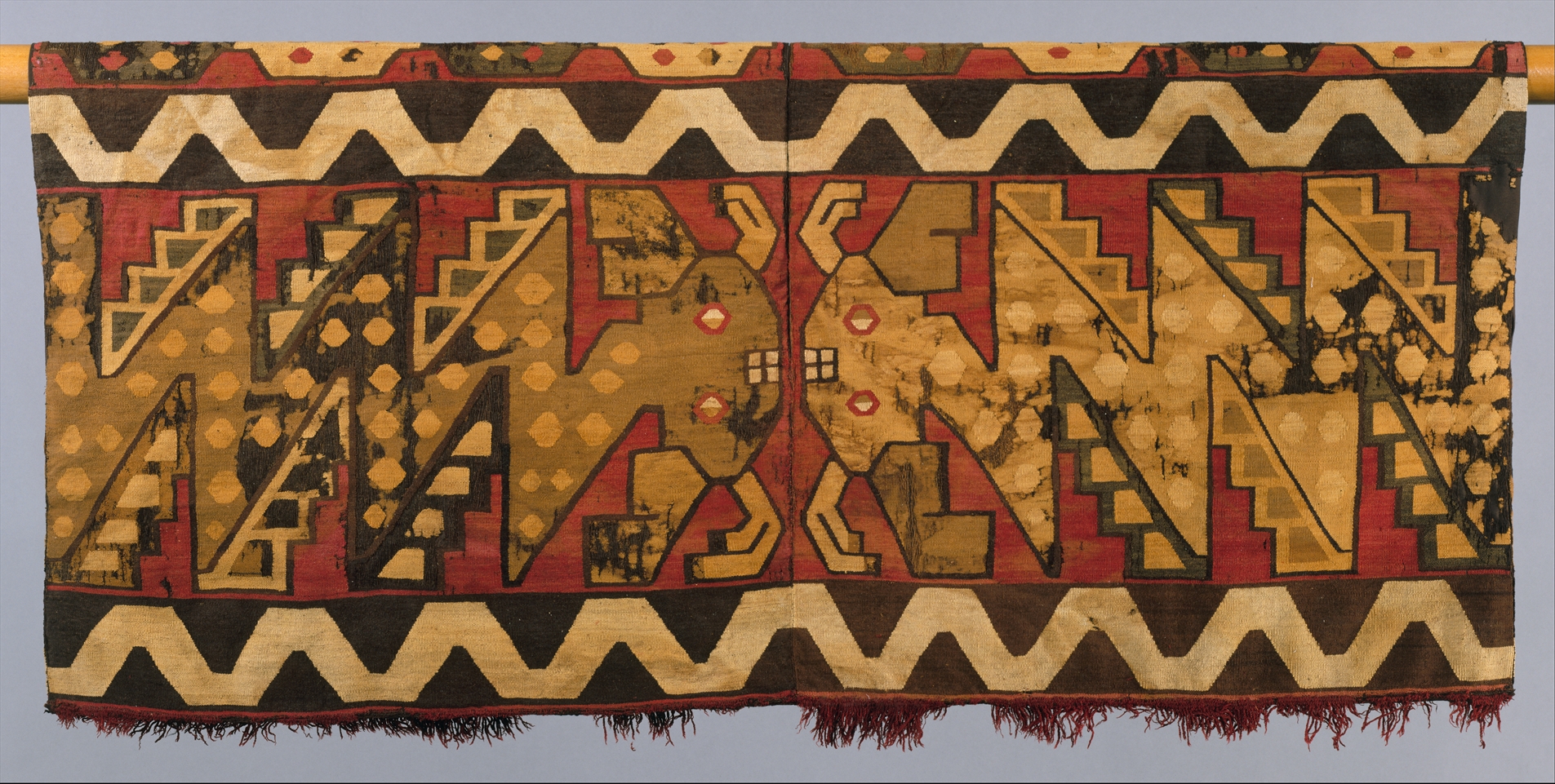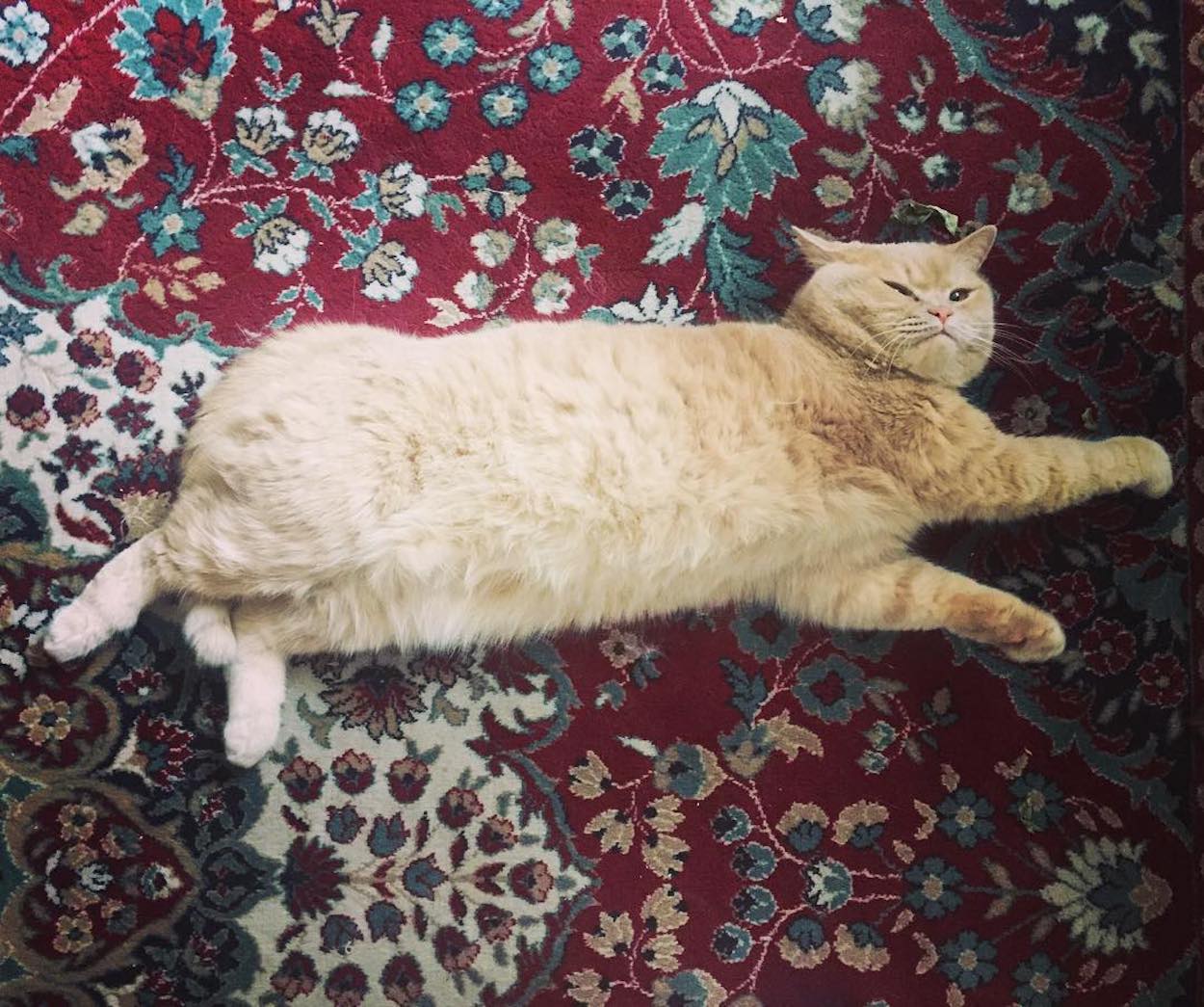The primary items of clothing for men in ancient Peru were tunics, with or without sleeves. They had a vertical slit opening at the top for the neck. Considerable effort and time were invested in making elaborate tunics because, in addition to being practical, they were statements of ethnic affiliation, social status, and religious beliefs among many groups.
Peruvian tunics display a great deal of variety in weaving technique and patterning and a wide range of colors. This example, made in the slit-tapestry technique, with identical halves joined at the center and along the sides, is bold in color and very unusual in design. Its main pattern consists of two catfish with spotted zigzag bodies facing each other at the center line of the tunic. Their large heads have bicolored eyes, bared teeth, barbels, and fins. While the shape and weaving technique are Nazca characteristics, the rendering of the eyes in two halves is indicative of the Wari style. This suggests that the tunic was woven in the Nazca area at a time when this region was under the influence of the Wari state.
Have a great Wednesday everyone!
P.S. The Wari people of Southern Peru are also known for their compositions made of feather panels. Read more about the use of feathers in Pre-Colombian art here.
This is the last week of a presale of DailyArt 2022 calendars. Hurry up and get yours 25% off the regular price!


 Unknown Artist
Unknown Artist